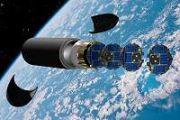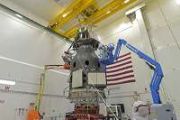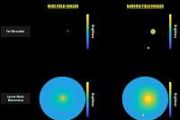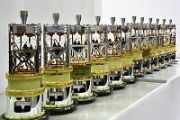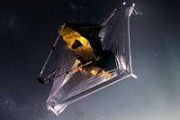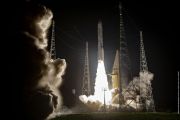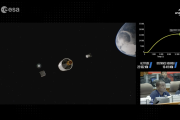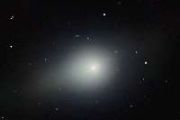
Copernical Team
Rocket Lab delivers seven satellites to orbit with Electron Rocket
 In a successful endeavor, Rocket Lab, the California-based space firm, deployed seven satellites into orbit from New Zealand's Mahia Peninsula on Tuesday. The mission, named "Baby Come Back," saw liftoff at 1:27 p.m. local time or 9:27 p.m. EDT Monday, following a delay from the past week due to unfavorable weather conditions.
The mission's seven-satellite payload, launched via the Electro
In a successful endeavor, Rocket Lab, the California-based space firm, deployed seven satellites into orbit from New Zealand's Mahia Peninsula on Tuesday. The mission, named "Baby Come Back," saw liftoff at 1:27 p.m. local time or 9:27 p.m. EDT Monday, following a delay from the past week due to unfavorable weather conditions.
The mission's seven-satellite payload, launched via the Electro SpaceX launches 54 Starlink satellites, ties record for first-stage returns
 SpaceX launched its latest round of Starlink communication satellites from the Cape Canaveral Space Force Station in Florida just before midnight Saturday.
The mission had been scrubbed Friday, with SpaceX saying a static fire of the rocket's main engines would need to be performed, giving a hint to a possible rocket hardware issue.
The Falcon 9 rocket's first stage, which launched t
SpaceX launched its latest round of Starlink communication satellites from the Cape Canaveral Space Force Station in Florida just before midnight Saturday.
The mission had been scrubbed Friday, with SpaceX saying a static fire of the rocket's main engines would need to be performed, giving a hint to a possible rocket hardware issue.
The Falcon 9 rocket's first stage, which launched t Orbit and Viasat collaborate to merge airborne terminals with expansive Ka-band Network
 Netanya, Israel (SPX) Jul 18, 2023
Orbit Communications Systems Inc., a supplier of SATCOM terminals, tracking ground station solutions, and crucial airborne audio management systems, has announced a cooperation agreement with Viasat Inc. This new alliance will see Orbit's airborne terminals integrated into Viasat's expanded Ka-band network, a vast framework which now encompasses the Global Xpr
Netanya, Israel (SPX) Jul 18, 2023
Orbit Communications Systems Inc., a supplier of SATCOM terminals, tracking ground station solutions, and crucial airborne audio management systems, has announced a cooperation agreement with Viasat Inc. This new alliance will see Orbit's airborne terminals integrated into Viasat's expanded Ka-band network, a vast framework which now encompasses the Global Xpr Experimental Phase commences for china's groundbreaking solar telescope array
 The National Space Science Center of the Chinese Academy of Sciences has announced the beginning of experimental observation for its cutting-edge solar telescope array located in Southwest China. The array, known as the Daocheng Solar Radio Telescope (DSRT), is an integral component of China's Meridian Project's second phase.
Positioned in Daocheng county, Sichuan province, the DSRT is an
The National Space Science Center of the Chinese Academy of Sciences has announced the beginning of experimental observation for its cutting-edge solar telescope array located in Southwest China. The array, known as the Daocheng Solar Radio Telescope (DSRT), is an integral component of China's Meridian Project's second phase.
Positioned in Daocheng county, Sichuan province, the DSRT is an Astronomers discover striking evidence of 'unusual' stellar evolution
 Astronomers have found evidence that some stars boast unexpectedly strong surface magnetic fields, a discovery that challenges current models of how they evolve.
In stars like our sun, surface magnetism is linked to stellar spin, a process similar to the inner workings of a hand-cranked flashlight. Strong magnetic fields are seen in the hearts of magnetic sunspot regions, and cause a varie
Astronomers have found evidence that some stars boast unexpectedly strong surface magnetic fields, a discovery that challenges current models of how they evolve.
In stars like our sun, surface magnetism is linked to stellar spin, a process similar to the inner workings of a hand-cranked flashlight. Strong magnetic fields are seen in the hearts of magnetic sunspot regions, and cause a varie XRISM mission to study 'rainbow' of x-rays
 A new satellite called XRISM (X-ray Imaging and Spectroscopy Mission, pronounced "crism") aims to pry apart high-energy light into the equivalent of an X-ray rainbow. The mission, led by JAXA (Japan Aerospace Exploration Agency), will do this using an instrument called Resolve.
XRISM is scheduled to launch from Japan's Tanegashima Space Center on Aug. 25, 2023 (Aug. 26 in Japan).
"Re
A new satellite called XRISM (X-ray Imaging and Spectroscopy Mission, pronounced "crism") aims to pry apart high-energy light into the equivalent of an X-ray rainbow. The mission, led by JAXA (Japan Aerospace Exploration Agency), will do this using an instrument called Resolve.
XRISM is scheduled to launch from Japan's Tanegashima Space Center on Aug. 25, 2023 (Aug. 26 in Japan).
"Re When ET calls, can we be sure we're not being spoofed?
 Scientists have devised a new technique for finding and vetting possible radio signals from other civilizations in our galaxy - a major advance in the search for extraterrestrial intelligence (SETI) that will significantly boost confidence in any future detection of alien life.
Most of today's SETI searches are conducted by Earth-based radio telescopes, which means that any ground or satel
Scientists have devised a new technique for finding and vetting possible radio signals from other civilizations in our galaxy - a major advance in the search for extraterrestrial intelligence (SETI) that will significantly boost confidence in any future detection of alien life.
Most of today's SETI searches are conducted by Earth-based radio telescopes, which means that any ground or satel Virgin Galactic's next spaceflight will include sweepstakes winners

Virgin Galactic's next spaceflight will include a mother-daughter duo from the Caribbean who won their tickets in a sweepstakes contest, as well as an 80-year-old former Olympian.
The company founded by British billionaire Richard Branson flew its first paying customers, members of the Italian Air Force, last month—a long awaited achievement that put it back on track in the emerging private spaceflight sector.
Its next mission "Galactic 02,' is planned for August 10 from Spaceport America, New Mexico, the company said in a statement.
Preserved presolar silicate grains found in Ryugu samples

New NASA Artemis instruments to study volcanic terrain on the moon
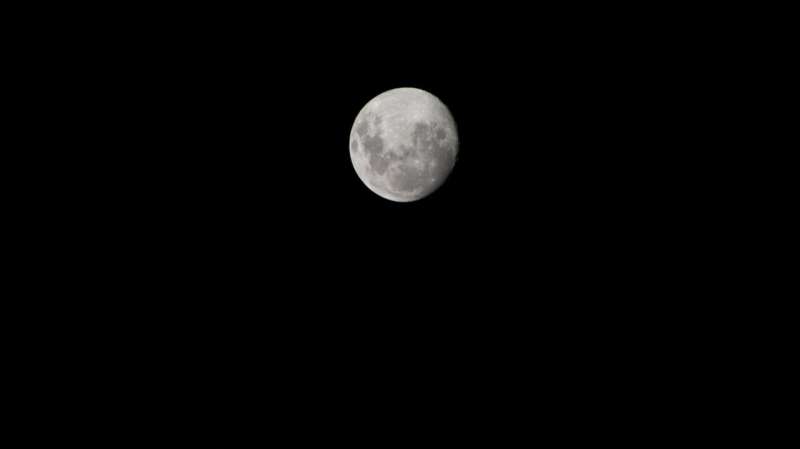
As part of NASA's regular cadence of robotic lunar missions through Artemis, the agency has selected a new scientific payload to establish the age and composition of hilly terrain created by volcanic activity on the near side of the moon.
The DIMPLE instrument suite, short for Dating an Irregular Mare Patch with a Lunar Explorer, will investigate the Ina Irregular Mare Patch, discovered in 1971 by Apollo 15 orbital images. Learning more about this mound will address outstanding questions about the evolution of the moon, which in turn can provide clues to the history of the entire solar system.
DIMPLE is the result of the third annual proposal call for PRISM (Payloads and Research Investigations on the Surface of the Moon), which sends science investigations to the moon through a NASA initiative called CLPS, or Commercial Lunar Payload Services. This PRISM call was the first that allowed proposers to choose and justify a particular landing site for conducting high-priority lunar science investigations.
"This commercial payload delivery initiative is helping to provide a burst of lunar science and exploration," said Nicola Fox, associate administrator for science at NASA Headquarters in Washington.


